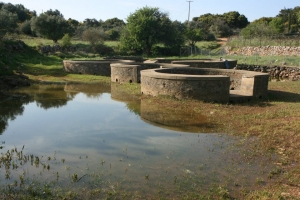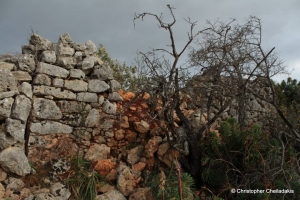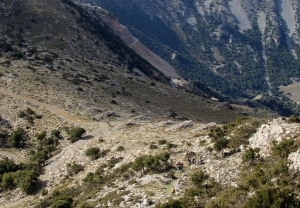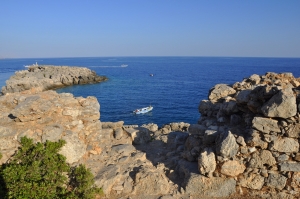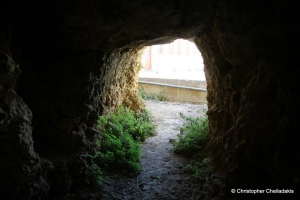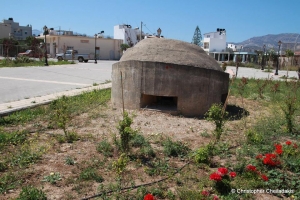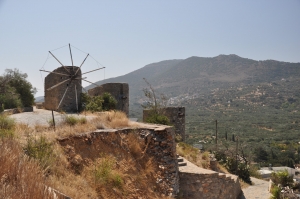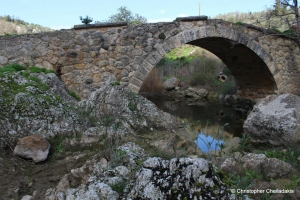On a plateau of Apokoronas province, by the village Paleloni, you will find the area Lygenia Wells. Is a series of stone, round and quite deep wells that the villagers constructed in the past in order to increase water source. In winter the wells overflow and shape a small lake in the area.
One of the many koules (Turkish towers) built by the Turks in Crete that is completely unknown is that of Vamos. It is located atop Koules hill above the village of Vamos and is very hard to reach and identify. Almost nothing survives from this fort apart from the foundations and some scattered piles of stones that once formed part of the walls. The vegetation has covered the area and in some years there will be nothing visible from the fort of a bygone era.
During the battle of Lassithi in 1867, the 10 windmills that stood near Potami village and were mainly used for milling, were destroyed by the Turks. The windmill park was then moved to Katakalou and Asfendami areas, and later moved to the big mill park of Ambelos.
Most visitors of Loutro know about the fortress of Koules, which even today dominates over the village.However, they are unaware of the existence of a second fortress which is very easily accessible. The fortress of Kastella is located south of the village and next to the harbor where the big ships from Chora Sfakion stop.
One of the very easily and really small shelters that are open to people is located in the city of Chania. It is located just behind the church of St. Spyridon and has two entrances like most. The shelter of Saint Spyridon is only a few meters deep. No light is needed as the gallery is quite short. The shelter was built at the site of a former cave, the entrance of which is blocked by boulders.
Nowhere in the Cretan coastline one meets so many German pillboxes than the seafront of Ierapetra. The pillboxes are made of concrete and are reminiscent of igloos with openings for machine guns. Even within the Ierapetra city we still meet pillboxes, all remnants of the German presence during the Second World War. One of the German pillboexs surviving in perfect condition is the one on the east side of the town in the area called Tziveri Limni.
North of Nikithianos village, Merambelo district, we still meet one of the most impressive windmill parks of Crete. There are still standing several windmills in a row. Others survive in good condition and others have collapsed.
The bridge of the village Kato Astraki is called Astrakiani Kamara (Arch of Astraki) and is located a few meters away from the village, on the banks of the River Karteros. Astrakiani Kamara is a magnificent and well preserved arched stone bridge built in the 16th century and is one of the most beautiful of Crete. The bridge was built to connect Astraki with Sgourokefali and the villages of the eastern side of the river Karteros.





